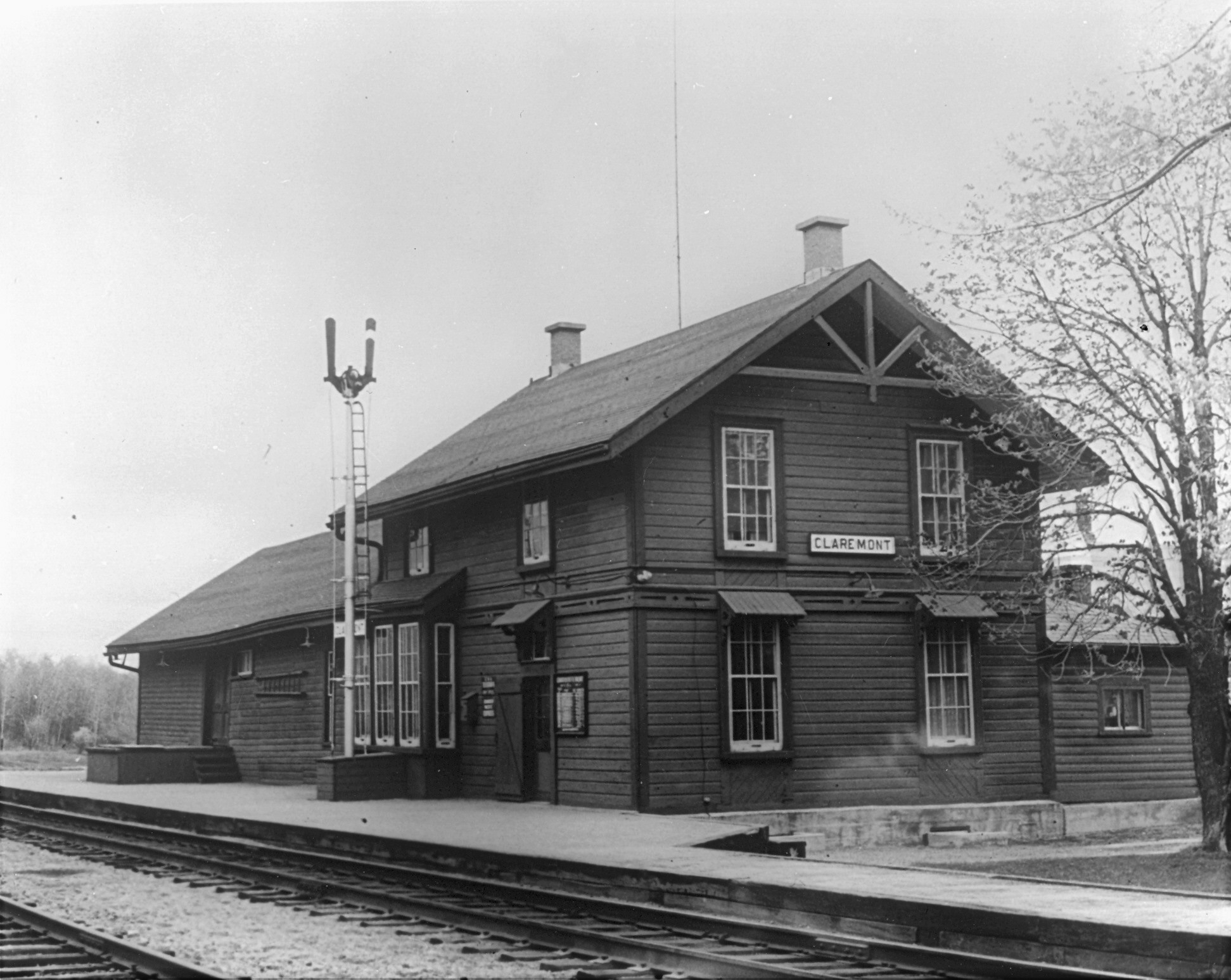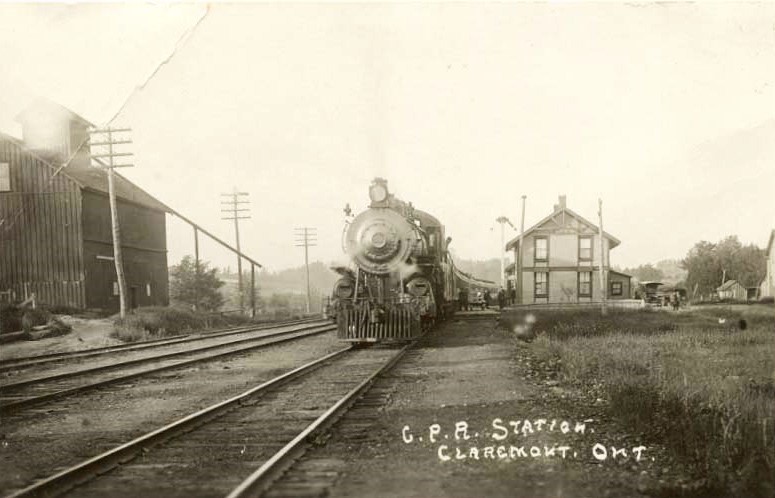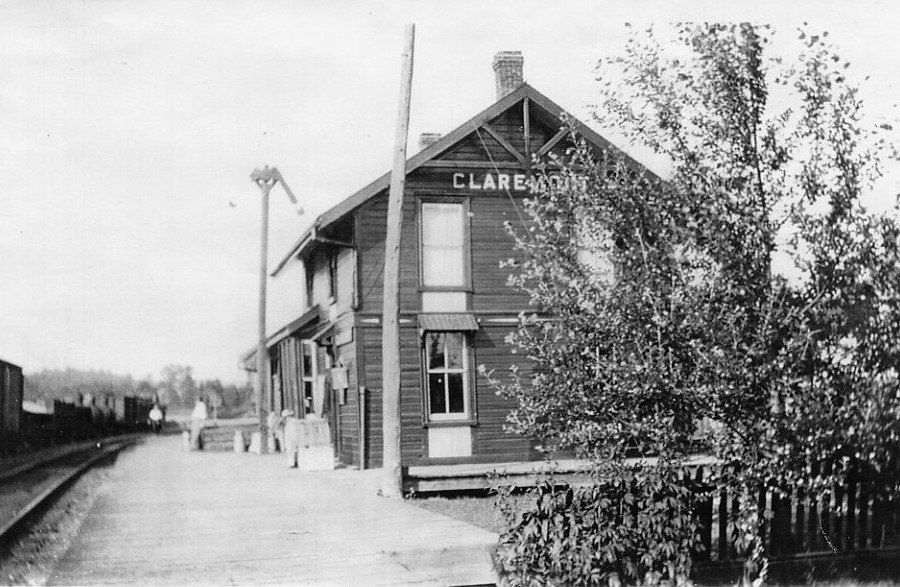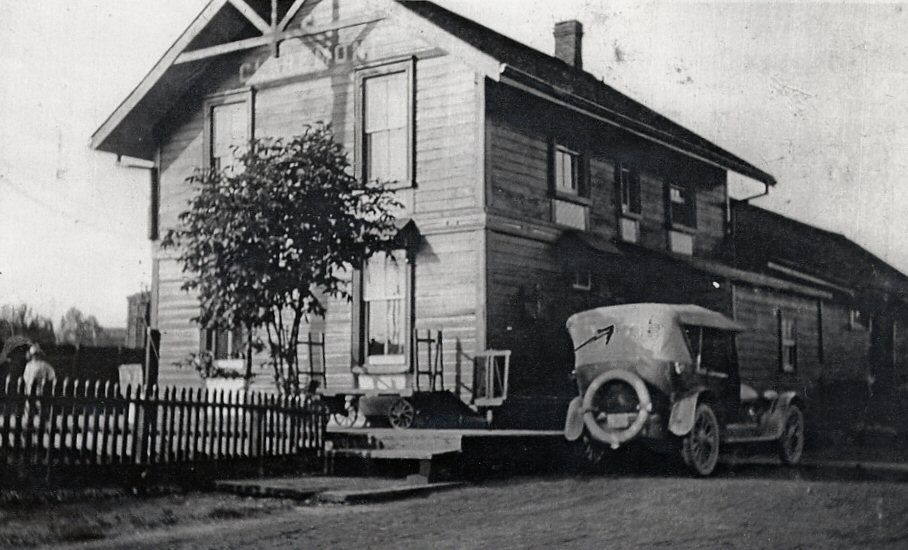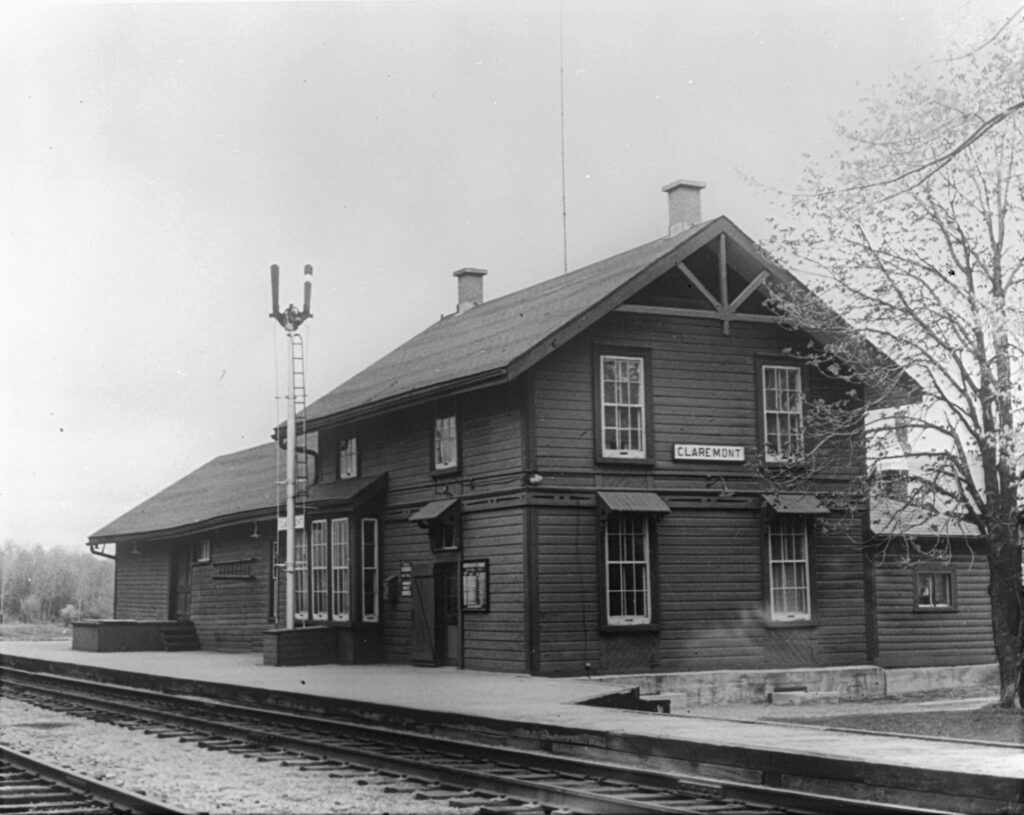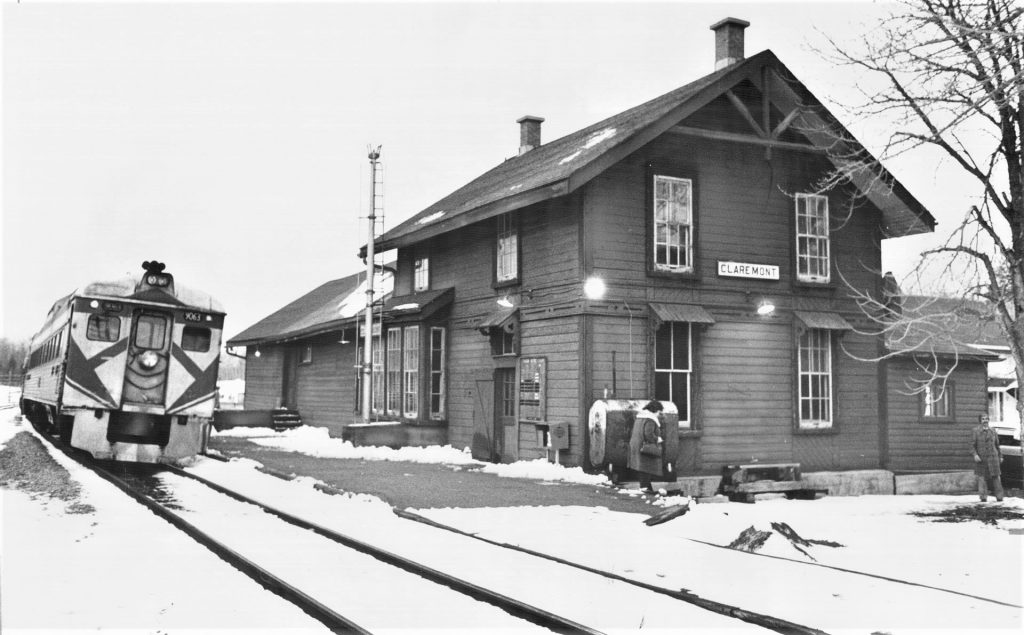Summary
Claremont Station was built in 1884 by the Ontario & Quebec Railway on the east side of Old Brock Road just north of the community of Claremont, which was situated around the intersection of Old Brock Road and Concession 9. The Ontario & Quebec existed solely on paper as a proxy of the Canadian Pacific Railway, to whom it was leased for 999 years. The station followed a standard “Van Horne” design, named after Canadian Pacific’s general manager William Cornelius Van Horne. Stations of this design were particularly common in rural areas on the Canadian Pacific in its earlier years, as the second floor contained the station master’s living quarters. This was the cheaper alternative to building separate accommodations nearby. The first floor contained the waiting room and station master’s office, with a long freight room extending outward from the east side of the building. The first train arrived in August 1884, and by 1899 a total of four passenger trains stopped in Claremont on a daily basis.
As rail traffic reached critical mass by the late 1800’s, Canadian Pacific began searching for solutions to allow for a higher volume of trains. An 1898 proposal involved double-tracking the entirety of the line from Montreal to Windsor, which was only partially fulfilled. Between Toronto and Smiths Falls, Canadian Pacific established a new right-of-way further south to serve communities closer to the lake in 1914. Initially this had little impact on the original mainline through Claremont, and ten trains still stopped there per day by 1921. The popularization of automobiles in the early to mid 20th century resulted in a significant decline in passenger ridership. This was further intensified after Highway 7 was established in 1920, running parallel to the railway in several places and serving many of the same communities. Rail traffic was also further reduced as a result of the pool train agreement between Canadian Pacific and Canadian National in 1933, resulting from the effects of the Great Depression on ridership. Many trains between Toronto and Montreal were consolidated, with a number of these being rerouted over the CN line much further south. By 1953, passenger service to Claremont had dropped to six per day.
In 1954, Canadian Pacific introduced a new service between Toronto and Havelock utilizing new self-propelled Budd Rail Diesel Cars. Marketed by Canadian Pacific as Dayliners, these units were cheaper to operate than conventional trains that required a locomotive separate from the passenger cars. The remaining conventional through-trains that used the line ended service by the mid-1960’s, leaving the Dayliner as the only service left. Despite having a total of seven Dayliners arriving in Claremont per day by 1974, Canadian Pacific announced it would be closed in 1977 to reduce costs. A Toronto Star article of the time quoted CP spokesman John Cox who dismissed members of the community who wished to preserve the station as simply “nostalgia buffs”. It was demolished later the same year and a small unmanned shelter was put in its place. Shortly after its replacement, passenger service between Toronto and Havelock was taken over by the newly-formed VIA Rail in 1978. Service continued for just over a decade until significant budget cuts to VIA in 1990, prompting the end of passenger service between Toronto and Havelock altogether.
Condensed Station Info:
| Location: | Served By: | Current State: | Date Built: | Date Demolished: |
| Track Street | Canadian Pacific (1884 – 1977) | Demolished | 1884 | 1977 |


